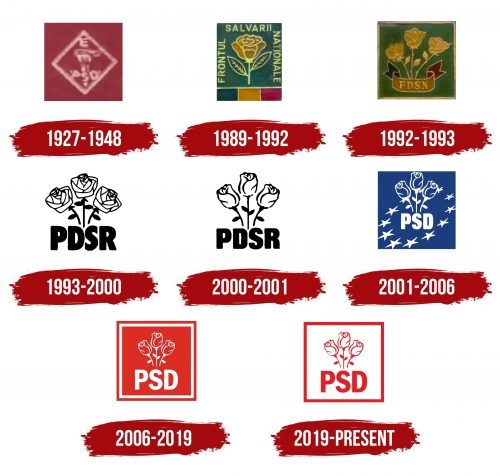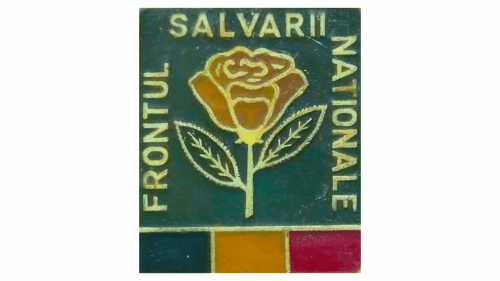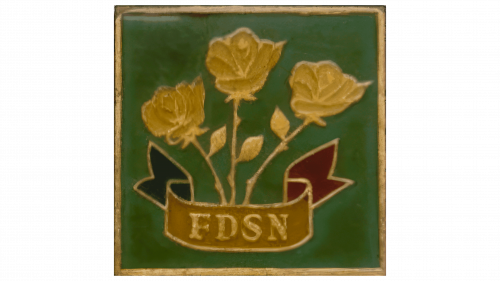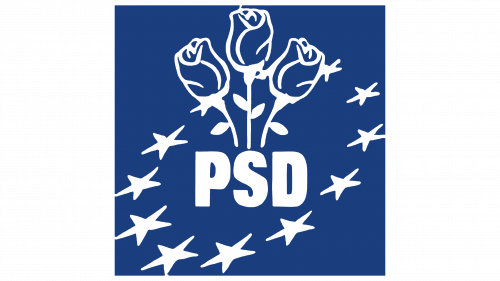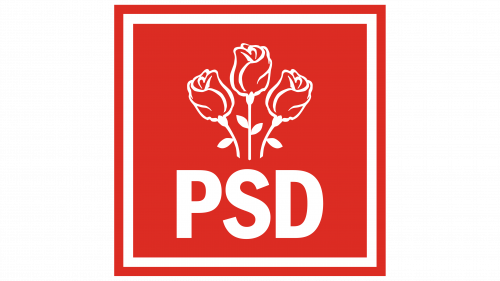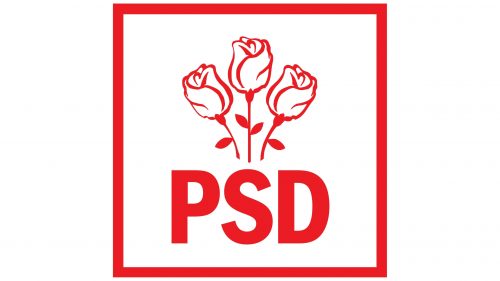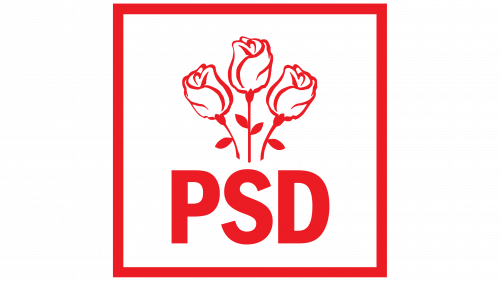 Partidul Social Democrat Logo PNG
Partidul Social Democrat Logo PNG
The Partidul Social Democrat logo is festive and celebratory, reflecting the life the movement’s followers aspire to create for Romanian citizens and the world. The emblem exudes a sense of lightness and freedom, which are the foundations of happiness, as the party understands.
Partidul Social Democrat: Brand overview
The Social Democratic Party (PSD) of Romania officially came to life on June 16, 2001, through the merger of the Party of Social Democracy in Romania (PDSR) and the Romanian Social Democratic Party (PSDR). Yet PSD’s roots stretch back to Romania’s early post-socialist era.
The precursor to PSD, the Party of Social Democracy in Romania (PDSR), emerged from the National Salvation Front (FSN), a political organization formed after the overthrow of Nicolae Ceaușescu’s regime in 1989. Led by Ion Iliescu, the FSN won Romania’s first free elections in 1990. In 1992, the FSN split, and Iliescu formed the Democratic National Salvation Front (FDSN), later renamed PDSR.
Throughout the 1990s, PDSR held a dominant position in Romanian politics, securing victories in the 1992 and 1996 elections. The party identified itself as a center-left force, advocating for social protection and gradual economic reforms.
The 2001 merger of PDSR and PSDR aimed to unify the left-wing forces in Romania, creating a robust social-democratic party modeled after Western European examples. Ion Iliescu became the first president of the unified PSD.
After its formation, the organization quickly solidified its position. In the 2000 elections (as PDSR), it received the highest number of votes, with Iliescu re-elected as President of Romania.
In 2004, the group lost the elections to a coalition of center-right parties yet remained the largest opposition force in Parliament. During this period, Mircea Geoană led the party.
In 2005, Mircea Geoană became the new leader, working to modernize the party’s image and distance it from its post-communist legacy.
The group won the most votes in the 2008 elections, forming a coalition with the Democratic Liberal Party (PDL). This alliance dissolved in 2009.
Victor Ponta was elected chairman in 2010. Under his leadership, the party formed the Social Liberal Union (USL) with the National Liberal Party (PNL).
The USL won decisively in the 2012 parliamentary elections, leading to Victor Ponta becoming Prime Minister of Romania. Internal disagreements caused the coalition to fall apart in 2014.
The group remained in power under Ponta’s leadership until November 2015, when he resigned following mass protests triggered by a tragic nightclub fire in Bucharest.
In the 2016 elections, the organization secured another victory with around 45% of the vote. Liviu Dragnea, the de facto leader, couldn’t become Prime Minister due to a criminal conviction for electoral fraud.
From 2017 to 2019, the group faced significant anti-government protests due to attempts to reform the judiciary. Critics accused the party of trying to weaken anti-corruption efforts.
In 2019, Liviu Dragnea was convicted of corruption and imprisoned, causing a leadership crisis within the organization. The party lost the European and presidential elections.
Meaning and History
What is Partidul Social Democrat?
It is one of the main political parties in Romania. The party adheres to center-left ideals and is oriented towards social democracy. It has significantly influenced Romanian politics, holding important positions in parliament and government. The main goals include improving social welfare, supporting economic growth, and developing infrastructure. The party is mainly supported by workers, rural residents, and people with low to moderate incomes. It actively participates in international social-democratic organizations, seeking to strengthen its influence on the European and global political stage.
1927 – 1948
A red square with a diamond inside surrounds a lit torch. The party ignites the flame of freedom and passes the torch to other countries so the light of socialism can help improve people’s lives.
The double border shows careful regard for the party’s values. It represents the desire to preserve the inner fire, which is the core of the struggle for the freedom of the working class.
The movement emerged after a split in the Socialist Party, with one party becoming communist and the other social-democratic. Thus, the white diamond symbolizes a way to separate its views from the former and show uniqueness.
At the bottom, near the torch’s handle, the abbreviation PSD appears as if the inscription holds the handle.
The party was banned in Romania and operated underground, which reflects themes of secrecy and shades of struggle.
1989 – 1992
After Romania regained its freedom, the renewed party seemed to bloom again, becoming official. This is why there is a flower on the logo. The rose has always been a symbol of the socialist movement, chosen for its beauty and resilience. Socialists believed the future the party strives for is beautiful and must be protected.
Each side of the square background features one of the words from Frontul Salvării Naționale, the movement reviving the party during the Romanian Revolution.
At the bottom is a stripe with three segments in the colors of the national flag. This element was part of the FSN logo, and from this foundation, the PSD rose grew.
1992 – 1993
The movement transformed into the Democratic National Salvation Front. The emblem featured three roses gathered in a bouquet, representing the organization as a successor to several movements in the country. At the bottom, the bouquet was surrounded by a heraldic ribbon with the abbreviation FDSN. The green background enlivened the image, emphasizing the vitality of democratic ideas.
1993 – 2000
In 1993, a significant event occurred in Romania’s political landscape—the merger of the FDSN movement with three other parties, leading to the formation of the Social Democratic Party of Romania (PSD). This union symbolized a new beginning and the strengthening of social democratic forces in the country. The logo created at this time emphasized the importance of this event and the party’s commitment to building a more just and prosperous society.
The logo consists of three blooming roses above the large abbreviation “FDSR.” These roses symbolize beauty, growth, and prosperity, reflecting the party’s commitment to social democratic ideals and aspiration for societal development and improvement.
The blooming roses represent the unity and merger of four political movements into one strong party—the Social Democratic Party of Romania. The emblem highlights the strength and potential of the new union, showing that the party is built on a solid foundation.
The abbreviation “FDSR” is rendered in a large, bold font, giving the logo strength and confidence. The font’s straight and clear lines symbolize the party’s determination and commitment to its principles. The roses are more delicately designed, adding aesthetic appeal to the logo.
The primary color of the emblem is black, emphasizing the party’s seriousness and readiness to tackle important social and political issues. The black color symbolizes strength and stability.
2000 – 2001
The logo was slightly modified, changing blooming roses to fresh, slightly opened buds. The approach demonstrated victory in the nationwide elections, marking a new beginning. The sign symbolizes renewal, new trends, and ideas that the party decided to promote. Developing a common program that united all participants implied a new start.
2001 – 2006
In 2001, another member joined the movement – the Romanian Social Democratic Party and the alliance changed its name to PSD. The abbreviation is visible under the three roses.
The emblem showed the social-democratic wing’s main political direction—moving toward the EU. Therefore, the roses are placed on the blue flag of the European Union, with stars surrounding them.
2006 – 2019
The 2006 emblem reflected all the ideals of the socialist movement and the history of Romanian social democrats. A red square background, three white roses, the abbreviation, and a white border created a unified image of energy, beauty, and resilience. The rebranding followed the change of the party chairman at the 2005 congress.
2019 – today
In 2019, the party suffered significant losses and lost voters’ trust. In light of these events, it was decided to change the party’s image, emphasizing its readiness for change and renewal. The logo, with a reduced red and white background, symbolizes the party’s effort to restore trust and demonstrate openness and honesty. The thin lines of the roses reflect a departure from the past and a transition to a new, softer, and more humane approach to politics.
The logo consists of the red abbreviation “PSD” and three red roses enclosed in thin lines. The roses symbolize beauty, passion, and the fight for the ideals that underpin social democratic principles.
The roses, depicted with thin lines, indicate the party’s commitment to purity, honesty, and transparency. The thin lines emphasize elegance and softness, contrasting with the aggressive rhetoric of past years.
The large letters of the “PSD” abbreviation are rendered in a bold font, giving the emblem strength and confidence. The font’s straight and clear lines symbolize the party’s determination and commitment to its core principles.
The logo’s primary colors are red and white. Red symbolizes passion, energy, and strength, while white represents purity and honesty. This color combination reflects the party’s aspiration for change and renewal.
